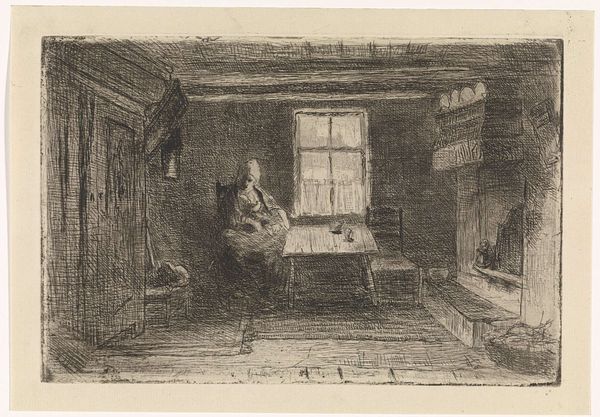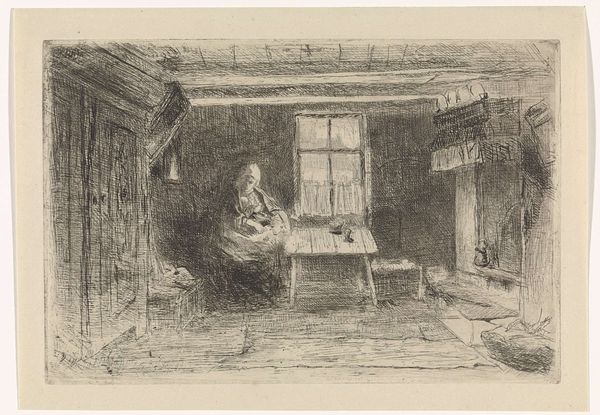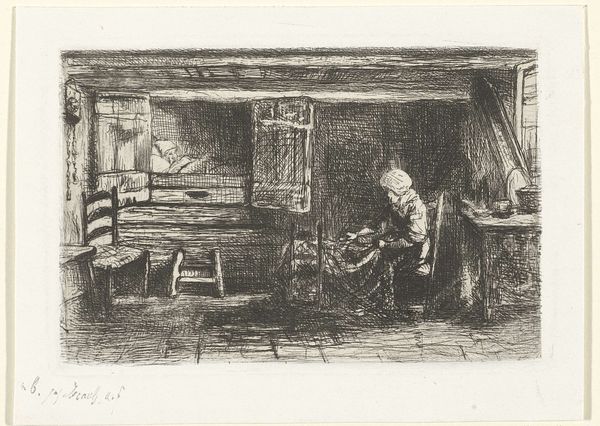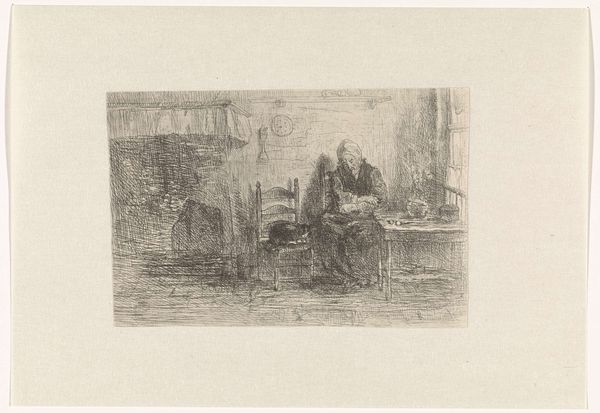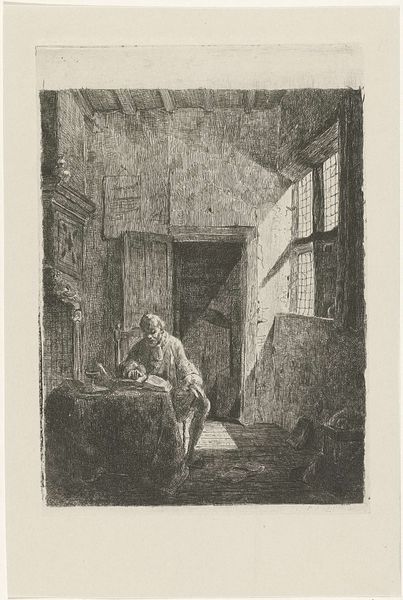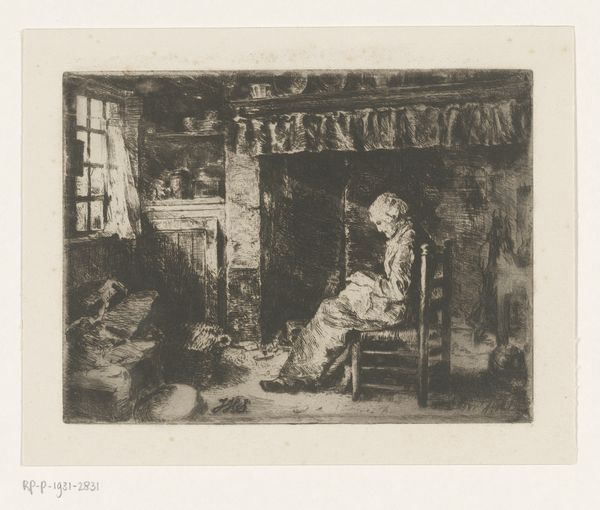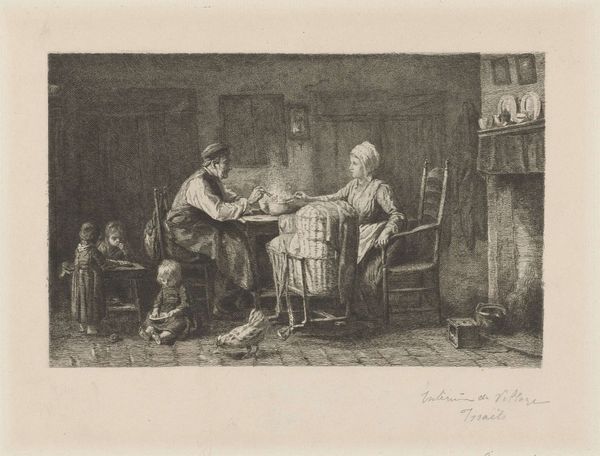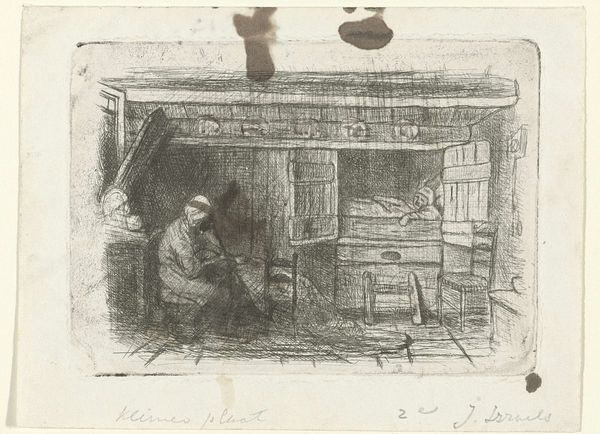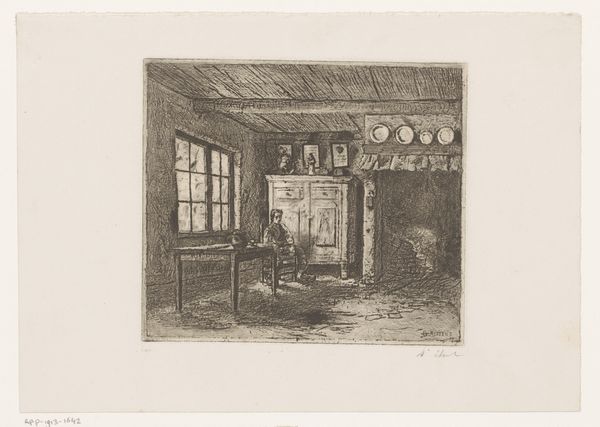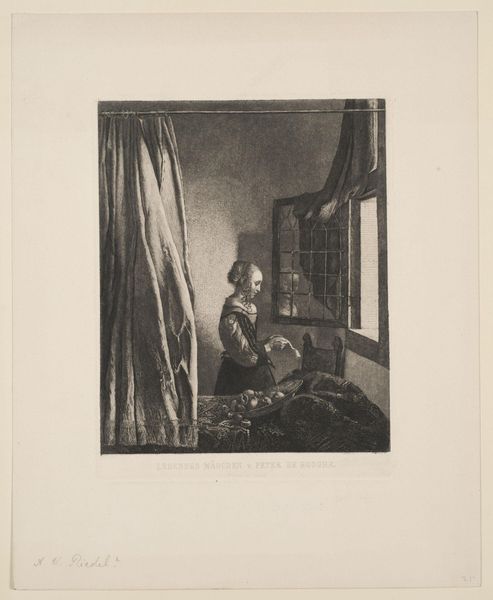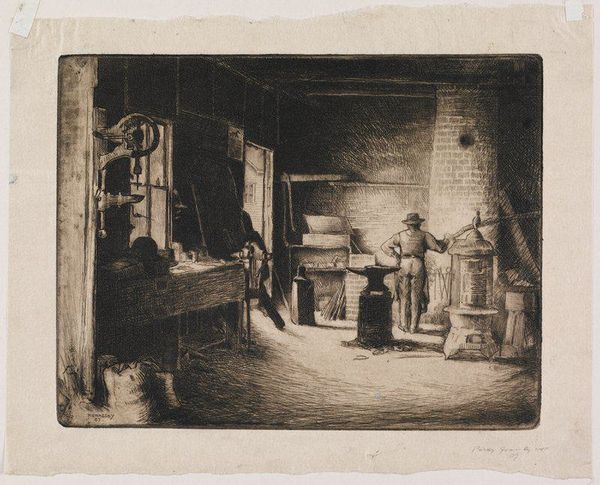
drawing, etching, ink
#
portrait
#
drawing
#
dutch-golden-age
#
etching
#
ink
#
genre-painting
#
realism
Dimensions: height 100 mm, width 151 mm
Copyright: Rijks Museum: Open Domain
Curator: Jozef Israëls crafted this etching, "Two Figures in an Interior," in 1873. It is a detailed rendering, made with ink on paper. Editor: Immediately, I’m struck by the strong contrast. The almost claustrophobic interior, the way the light struggles to penetrate—it creates a very intimate, melancholic atmosphere. Curator: Israëls was a master of portraying the lives of ordinary people. The means of producing this image—the etching, the use of readily available materials—speaks volumes about its intended audience. This wasn’t art for the elite; it was art intended to represent the everyday reality of the working class. Editor: Indeed, the composition guides your eye around the room, emphasizing the spatial relationships. The woman bent over her work is central, of course, but the positioning of the bed and the items on the shelf, their relationships relative to each other, contributes to the harmony of the composition. Curator: It is an interior scene, almost a 'genre painting,' yet rendered through this medium, etching, allows a wider distribution and consumption. It invites its viewers to see and perhaps even reconsider their own relationship to labor and to the domestic sphere. Notice, the labor and process that underlies the image's production—the artist making deliberate marks with an etching needle—reflects the unseen work of domesticity occurring within the space that the image portrays. Editor: I agree completely. The use of light and shadow, what seems to me its expressive distortion and stark contrast, contributes significantly to the scene’s inherent emotional impact, as well as our awareness of the spatial distribution of light around objects. And perhaps most crucial, it reinforces our engagement. It speaks to me of perseverance amid hardship, or the everyday quiet reality of the human existence, captured in those patterns. Curator: Reflecting on it, this etching challenges us to reconsider our understanding of Dutch art, blurring boundaries between high art and scenes of everyday labor. Editor: And through his skillful arrangement of forms and the exploitation of light, Israëls creates more than just an illustration—he’s constructed an experience.
Comments
No comments
Be the first to comment and join the conversation on the ultimate creative platform.
